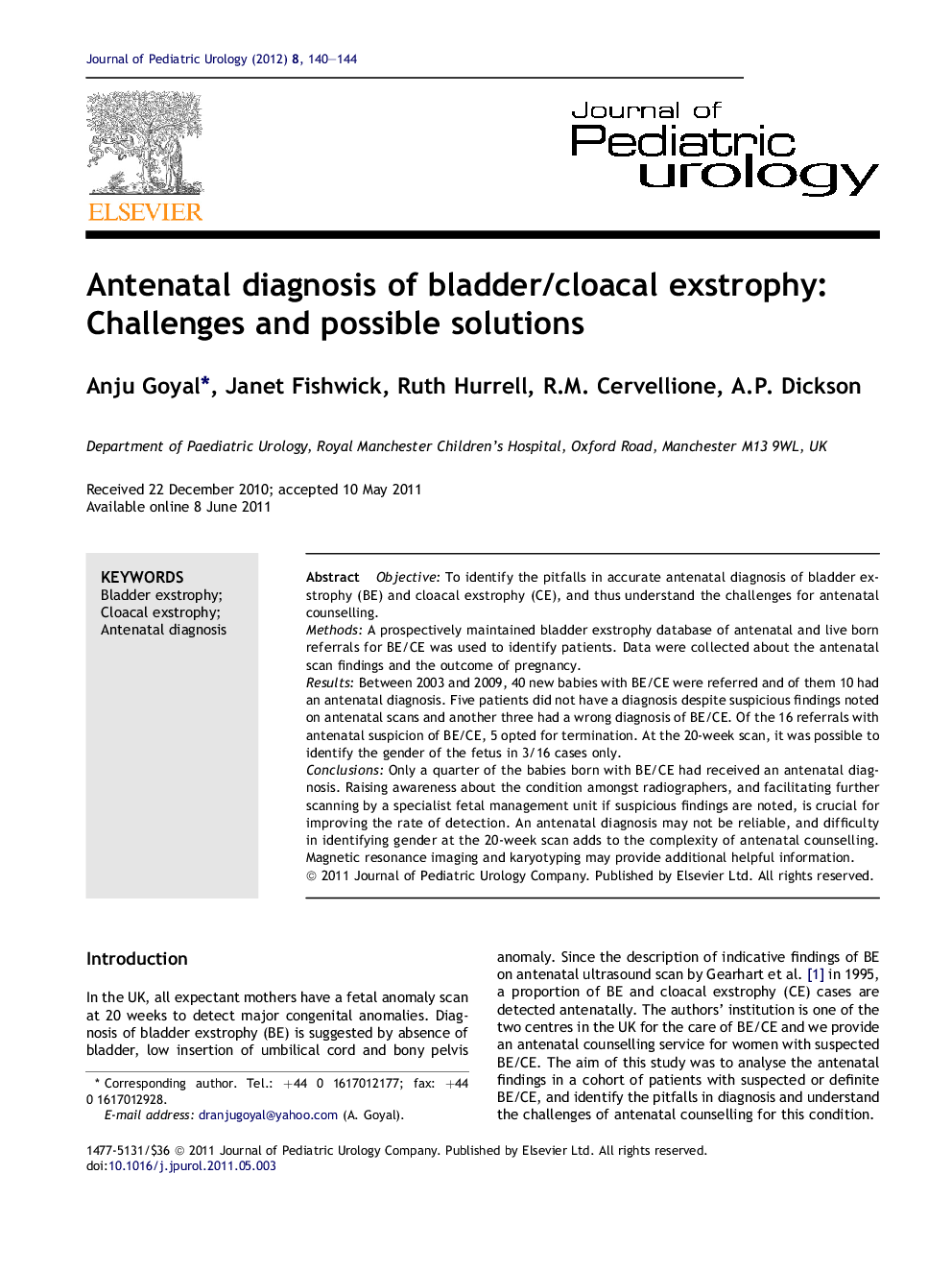| Article ID | Journal | Published Year | Pages | File Type |
|---|---|---|---|---|
| 4162717 | Journal of Pediatric Urology | 2012 | 5 Pages |
ObjectiveTo identify the pitfalls in accurate antenatal diagnosis of bladder exstrophy (BE) and cloacal exstrophy (CE), and thus understand the challenges for antenatal counselling.MethodsA prospectively maintained bladder exstrophy database of antenatal and live born referrals for BE/CE was used to identify patients. Data were collected about the antenatal scan findings and the outcome of pregnancy.ResultsBetween 2003 and 2009, 40 new babies with BE/CE were referred and of them 10 had an antenatal diagnosis. Five patients did not have a diagnosis despite suspicious findings noted on antenatal scans and another three had a wrong diagnosis of BE/CE. Of the 16 referrals with antenatal suspicion of BE/CE, 5 opted for termination. At the 20-week scan, it was possible to identify the gender of the fetus in 3/16 cases only.ConclusionsOnly a quarter of the babies born with BE/CE had received an antenatal diagnosis. Raising awareness about the condition amongst radiographers, and facilitating further scanning by a specialist fetal management unit if suspicious findings are noted, is crucial for improving the rate of detection. An antenatal diagnosis may not be reliable, and difficulty in identifying gender at the 20-week scan adds to the complexity of antenatal counselling. Magnetic resonance imaging and karyotyping may provide additional helpful information.
